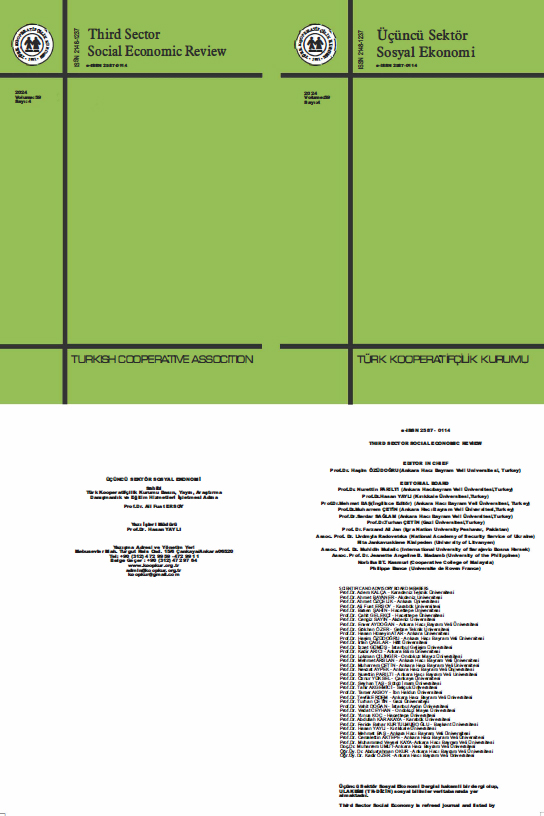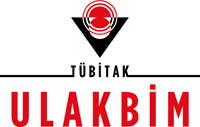Yıl: 2024 Cilt: 59 Sayı: 4 Sayfa: 2388-2406
doi: 10.15659/3.sektor-sosyal-ekonomi.24.11.2535
TÜRKİYE’DE İSTİHDAM VE EKONOMİK BÜYÜME İLİŞKİSİ: DÜZEY 2 BÖLGELERİ ÖRNEĞİ
SELİN DİNÇER
İstihdam ve ekonomik büyüme bir ülke ekonomisinde politikalara yön veren iki önemli makroekonomik değişkendir. İktisat literatüründe üretilen mal ve hizmet miktarındaki kişi başına veya toplamda meydana gelen artışı ifade eden ekonomik büyüme ve üretimde işgücünün kullanılmasını ifade eden istihdam arasında önemli ilişki bulunmaktadır. Bu doğrultuda bu çalışmada istihdam ve ekonomik büyüme ilişkisi bölgesel düzeyde incelenmektedir. Çalışmanın amacı, 2004-2022 döneminde Türkiye’de Düzey 2 bölgelerinde istihdam ve ekonomik büyüme ilişkisini panel Otoregresif Dağıtılmış Gecikme (ARDL) ve Emirmahmutoğlu & Köse nedensellik analizi ile incelemektir. Çalışmadan elde edilen bulgular, uzun dönemde Düzey 2 kapsamında yer alan 26 bölgenin tamamında istihdamın ekonomik büyümeyi artırdığını ortaya koymaktadır. Diğer taraftan kısa dönemde yalnızca Düzey 2 kapsamında yer alan TR10, TR21, TR31, TR41, TR42, TR51, TR61 olmak üzere 7 bölgede istihdamın ekonomik büyümeyi artırdığı tespit edilmiştir. Bu bölgelerin ise diğer bölgelere kıyasla daha gelişmiş ve sanayileşmiş bölgeler olduğu dikkat çekmektedir. Nedensellik analizinden elde edilen bulgular ise Düzey 2 bölgelerinde istihdam ve ekonomik büyüme arasında çift yönlü nedensellik ilişkisi bulunduğunu ortaya koymaktadır. Bulgulardan hareketle istihdam ve ekonomik büyüme arasında anlamlı bir ilişki olduğu görülmektedir. Dolayısıyla ülke içerisinde ekonomik faaliyetlerin dağılımında görülen bölgesel farklılıkların azaltılabilmesi, fırsat eşitliği sağlanabilmesi için az gelişmiş bölgelerde istihdam olanaklarının arttırılması ve bölgesel kalkınmanın teşvik edilmesine yönelik politikaların hayata geçirilmesi önem arz etmektedir.
Anahtar Kelimeler (Keywords): Ekonomik Büyüme, İstihdam, Bölgesel Gelişmeler, Düzey-2 Bölgesi, Panel ARDL, Panel Nedensellik
EMPLOYMENT AND ECONOMIC GROWTH RELATIONSHIP IN TURKEY: THE CASE OF LEVEL-2 REGIONS
Employment and economic growth are two important macroeconomic variables that shape policies in a country's economy. In the economic literature, there is an important relationship between economic growth, which refers to the increase in the amount of goods and services produced per capita or in total, and employment, which refers to the use of labour force in production. Accordingly, this study analyses the relationship between employment and economic growth at the regional level. The aim of the study is to examine the relationship between employment and economic growth in Level 2 regions in Turkey for the period 2004-2022 by using panel Autoregressive Distributed Lag (ARDL) and Emirmahmutoğlu & Köse causality analysis. The findings of the study reveal that in the long run, employment increases economic growth in all 26 regions within the scope of Level 2.On the other hand, in the short run, it is found that employment increases economic growth only in 7 regions (TR10, TR21, TR31, TR41, TR42, TR51, TR61) within the scope of Level 2.It is noteworthy that these regions are more developed and industrialised regions compared to other regions. The findings obtained from causality analysis reveal that there is a bidirectional causality relationship between employment and economic growth in Level 2 regions.Based on the findings, there is a significant relationship between employment and economic growth.Therefore, in order to reduce regional differences in the distribution of economic activities within the country and to ensure equality of opportunity, it is important to increase employment opportunities in less-developed regions and to implement policies to promote regional development.
Anahtar Kelimeler (Keywords): Economic Growth, Employment, Regional Developments, Level-2 Region, Panel ARDL, Panel Causality
Tam Metin 138











